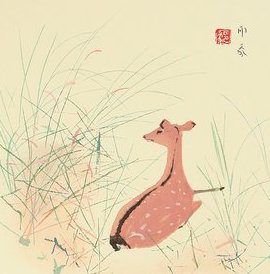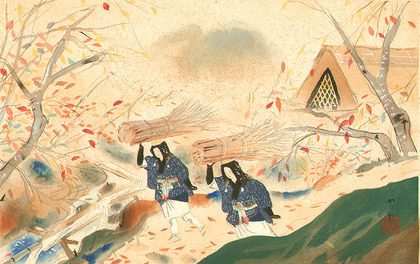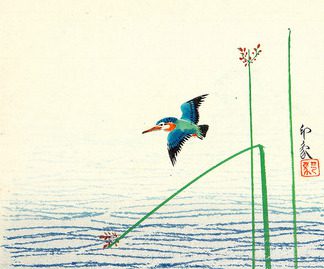Japan art and Domoto Insho: Early Showa art
Lee Jay Walker
Modern Tokyo Times

The Japanese artist Dōmoto Inshō (1891-1975) created astonishing art throughout various stages of his life. He also taught many artists, including Imoto Tekiho.
In the above art piece, the deer is resting peacefully. The colorful high grass also creates a lovely backdrop. Hence, a magical feel is witnessed when viewing this stunning art piece.

The above art piece is part of the Eight Views of Kyoto (Kyoto Hakkei). Delightfully – and without class bias – the art piece depicts two busy workers from the village of Ohara. This village is near Kyoto. Therefore, the two workers are preparing to sell flowers and vegetables to tourists who visit the cultural city of Kyoto.
Below, a graceful kingfisher skims over the water in search of food. In view also are three reeds that create a lovely ambiance.

The British Museum says, “Domoto designed only a few prints but is remembered as an innovative ‘Nihonga’ painter in the Kyoto tradition. He was born in Kyoto… He graduated in 1910 from the Kyoto Shiritsu Bijutsu Kogei Gakko (Kyoto City School of Fine Arts and Crafts). He initially did design work for Mitsukoshi Department Store and for the silk textile firm Tatsumura Heizo. He then entered the Kyoto Shiritsu Kaiga Sen-mon Gakko (Kyoto City Specialist School of Painting), finally graduating after research studies in 1924. Meanwhile he was actively painting and became a pupil of the ‘Nihonga’ artist Nishiyama Suisho (1879-1958)…”
The art pieces in this article concern the early Showa Period. Hence, these art pieces range from 1928 to the 1930s.

Modern Tokyo News is part of the Modern Tokyo Times group
http://moderntokyotimes.com Modern Tokyo Times – International News and Japan News
http://sawakoart.com – Sawako Utsumi’s website and Modern Tokyo Times artist
https://moderntokyonews.com Modern Tokyo News – Tokyo News and International News
PLEASE JOIN ON TWITTER
https://twitter.com/MTT_News Modern Tokyo Times
PLEASE JOIN ON FACEBOOK